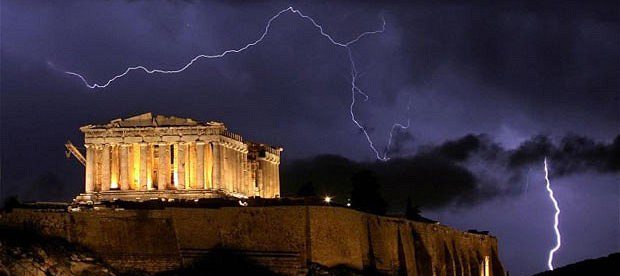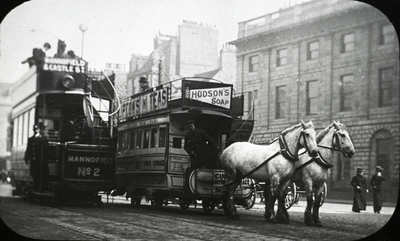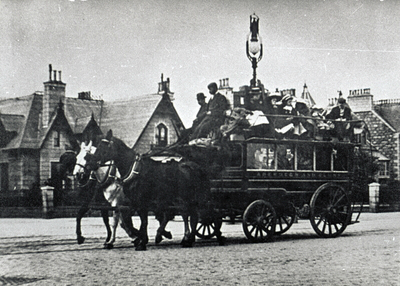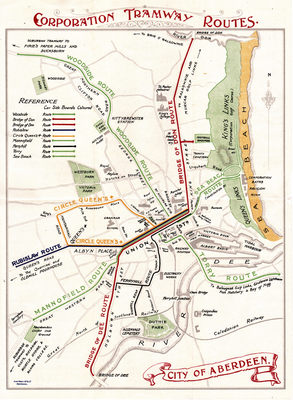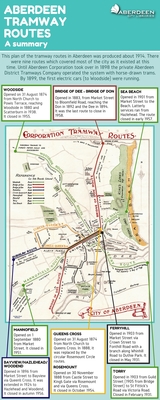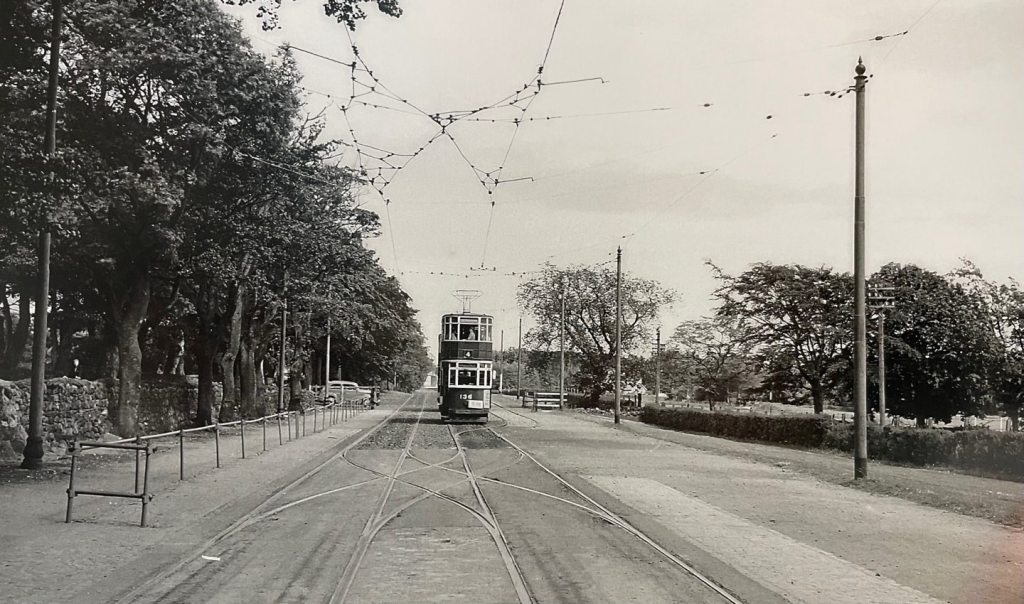Aberdeen Tram Routes

Horse Drawn Buses: From the 1860s, the City of Aberdeen and its immediate Suburbs was served by Horse Bus Services including Market Street to Bieldside, the Mill Inn & Murtle, to Woodside, Bucksburn & Stoneywood, and from Queen’s Cross to Old Aberdeen via Union Street & King Street. One of the best-known of the Horse-bus Operators was William Bain who operated for a time from the New Waterhouse at 478 Union Place. His Buses served a number of Districts including Gallowgate, Rosemount, Skene Square, Carden Place, College Street & Marywell Street. Bridge of Dee & Bridge of Don & were known as ‘Bain’s Buses‘. They Operated without a serious Accident during the whole of their existence. In the year ending June 1879, the Passengers numbered 957,115 & the receipts amounted to £5.080, the expenditure to £3,959. Horse-buses also operated to ‘Country areas‘ such as Echt, Cluny & Newburgh. The Routes were given in the Annual Aberdeen Post Office Directory Maps & these seem to indicate that not all Operators were listed in the Directory itself. There were also Horse-Buses between Country Towns; for example the ‘Foggie Dirder‘ between Aberchirder & Huntly, which carried a Post Box for the use of the Public, Passengers or not. As late as 1893, when Horse-Trams were established in the Town Centre, the inhabitants of the growing Suburb of Torry successfully petitioned for a Horse-bus Service, Passenger Fares being set at 1d with Creels a 1d extra. The Service Operated from Guild Street to avoid the steep Ascent of Market Street & was much favoured on Public holidays for Picnics at the Bay of Nigg.
In 1870 the Tramways Act was passed to Regulate Street Tramway Construction on those who had gained Parliamentary approval. The Aberdeen District Tramways Act of 1872 Authorised several Lines through Aberdeen; all the Tracks were to be Single Track with passing Loops. Two Routes were built from King Street to Queen’s Cross & St Nicholas Street to Kittybrewster & Opened in 1874 as Horse Tramways. In 1880 the District Tramways extended their Horse Tram to Mannofield & Woodside. The Tramways Act of 1870 permitted the Compulsory Purchase Powers by Local Authorities of any Tramway within its Boundary only to be exercised 21-yrs after the Tramways’ Construction.
Horse Tramways: A Group of Local Businessmen successfully obtained Parliamentary sanction under the Aberdeen District Tramways Act 1872 to set up the Aberdeen District Tramways Company. By 1874, they had constructed their 1st 2–Horse-drawn Lines – one 2-miles, 54-chains long, running from Queen’s Cross, via Albyn Place & Union Street, to the North Church in King Street and the 2nd from St Nicholas Street & George Street to Kittybrewster were opened in September 1874 & extended to Mannofield in 1880, their aggregate cost of Construction being £18,791. They had 2-Cars which could each carry 20 inside Passengers and 4-Cars for 20 inside & 20 outside Passengers. A fare of 3d was charged for the full Route. In their 1st year, they carried 1.1M Passengers. The Cars were pulled by Horses: 8 per Tram, working in Pairs in 3½-hr Shifts, provided a Service every 15-mins from 8-am to 10-pm; ½–Fares were charged for those travelling outside. In exceptional circumstances such as Snowstorms, it was necessary to use 3-Horses per Tram. The average cost for feeding was 11/- per Horse per week & the life of the Horses averaged 5-years. Drivers & Conductors worked 14½-hrs per day, including 1-hr for Breakfast & 1-hr for Dinner. No time was allowed off for Tea, but 1/- was paid instead & the men concerned used to avail themselves of the 1st opportunity for taking this Meal on the Tram. They were allowed 3-Nights off per week from 5-pm & no Sunday Services were run. The Wages were 22/- per week for 1st-year Drivers & 24/- per week thereafter. Operations were continued through the Snowy Winter of 1878 by mounting the Trams on Sledges. The 1st yr’s revenue was £5,535; the Population of the City at that time was approximately 90,000.
The 3-Horse-drawn Bus in this photograph is one of “Allan’s Liners“. This was the name given to the Aberdeen to Cluny Bus from its Introduction in 1849 until the Route passed to the Great North of Scotland Railway Motor Buses in 1906.
Allan continued to run Mail Gigs & Coaches until at least after the Great War.
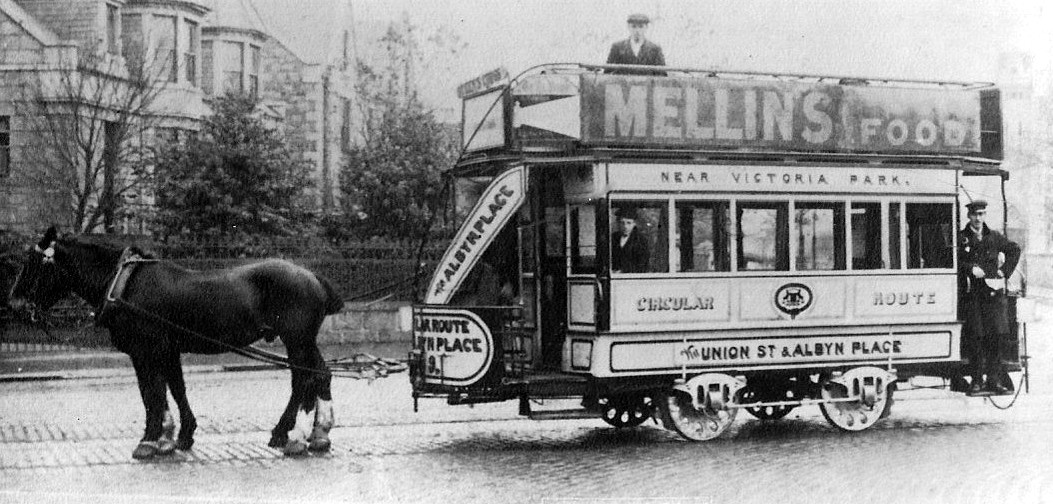



Aberdeen Tramways – A Selected Timeline
31st August 1874 The 1st Routes opened from North Church to Queen’s Cross and from St Nicholas to Causewayend
1st September 1880 Lines opened included those from Mannofield to Holburn Junction & Woodside Fountain to Kittybrewster Station
December 1883 Line opened from Cuparstone Corner to Bloomfield Road
30th November 1888 Rosemount Circle Line opened
24th August 1894 Bloomfield Road to Bridge of Dee Line opened
22nd August 1896 Line opened from Queen’s Cross to Bayview House
By the late 1890s, consideration was being given to the introduction of Electric Traction in place of Horse haulage. After lengthy discussions, the decision was made to sell the Tramways Company to Aberdeen Corporation and the Transfer was completed in August 1898.
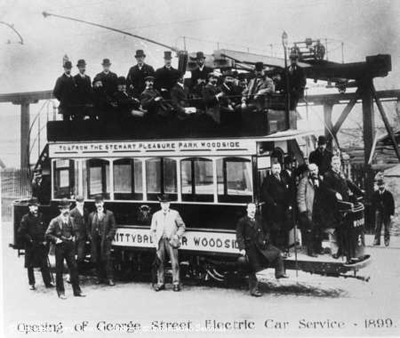
23rd December 1899 Woodside Route 1st to be Electrified
The Inaugural Procession on 23rd December 1899 for the Electrification of the Woodside Tram Route, the 1st in Aberdeen to be so modernised. Lord Provost John Fleming (Timber Merchant) is at the Controls, with Tramways Convener Alexander Wilkie standing next to him, and Councillor Alexander Glass with his foot on the Platform. Next to Fleming & Wilkie & above Glass, appears to be Alexander Lyon, Provost between 1905-1908. Baillie James Taggart, also later to be Provost, is the right-most figure in the back Row on the Upper Deck of of the Car. Two to the left of Taggart may be James Walker, Provost between 1903-1905. James Alexander Bell, City Electrical Engineer for Aberdeen in the late 19th & early 20thCs, is the Bowler hatted figure on the Stairs above Lord Provost Fleming. The last Tram to Woodside ran in 1955. In the background is a large Gantry Crane running on Rails supported by Columns with the Rail Ends Braced with Timber Tripods & appears to be Servicing a Woodyard Perhaps under John Fleming‘s Ownership but his Timber Yard was in Footdee.
An Electric Tramway Scheme in the Suburbs was announced in the Press & Journal in 1901 when the Aberdeen Suburban Tramways was formed. Electrification of the Lines proceeded rapidly and the Deeside Section of the Tramway opened on 23rd June 1904 with the Woodside to Bankhead Line following on the 18th July.
4th July 1901 Electric Line Station opened from Castlegate to Bathing Pool.
By 1902 all the Tracks had been converted to Electric Traction and new Routes to Torry & Ferryhill were opened in 1903.
This Plan of the Tramway Routes (click Image to Enlarge) in Aberdeen was produced about 1914 & shows the Route Colours which were displayed as Coloured Bands on the Top-deck of the Corporation Tramcars. There were 9-Routes which covered most of the City as it existed at this time. By the late-1890s, consideration was being given to the introduction of Electric Traction in place of Horse Haulage. After lengthy discussions, the decision was made to sell the Company to Aberdeen Corporation and the Transfer was completed in August 1898. By 1902 all the Tracks had been converted to Electric Traction & New Routes to Torry & Ferryhill were opened in 1903.
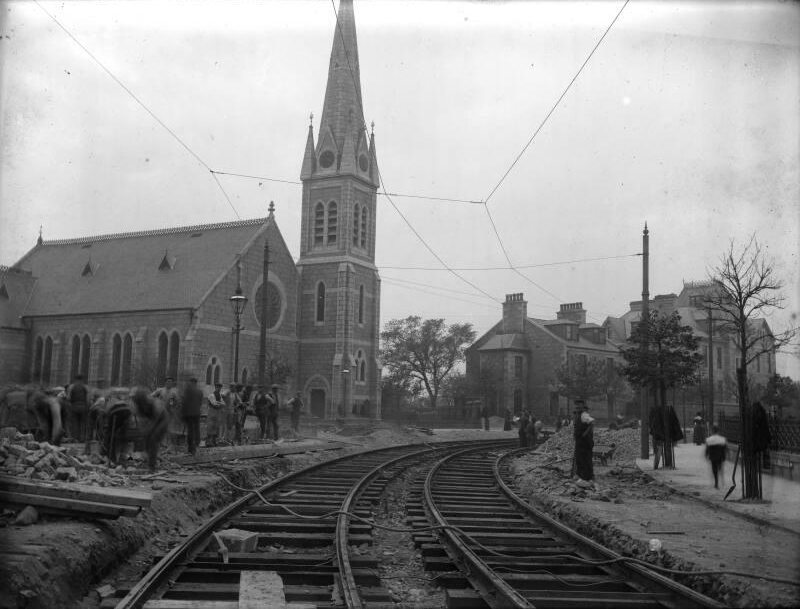
Ferryhill Route – Whinhill Road to Castle Street: Whinhill Road, Fonthill Road, Ferryhill Road, Crown Street, Union Street & Castle Street. The Route into the City passes through the Ferryhill District, passing along Whinhill Road, where a good view of the Deeside Hills could be seen from the Tramcar. At Fonthill Road a 2nd short Branch of Tramway leads to Holburn Street, passing on the right the West Poor House (St Machar’s). The Car, after passing down the steep descent of Ferryhill Road, enters Crown Street near the Electric Station. This up-to-date Power Station was Erected by the Town Council in 1901 & Supplies the Electric Lighting of the City & also the Traction Power for the City & Suburban Cars. Near the other end of Crown Street is the new Central Post Office, Erected in the Scottish Baronial Style at a cost, including Site, of £50,000. The Car enters Union Street & the Journey is continued to Castle Street.
28th April 1913 First City in Europe to introduce “Pay as You Enter” System

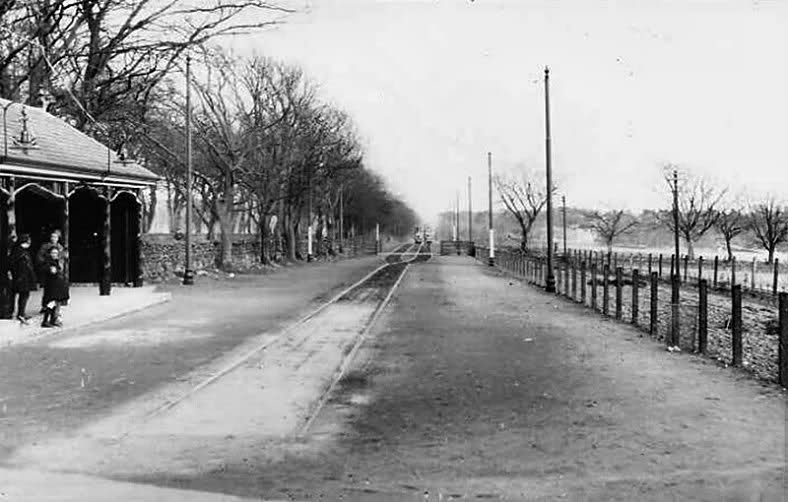
Hazlehead Terminus Route 4 – the tree-lined Avenue of Hazlehead with 2 Lines converged into one for changing direction. Just opposite the Rustic Tram Shelter for Passengers to Alight or Board adjacent to the Park Entrance. The Field opposite held the 112th Royal Highland & Agricultural Society Show in 1951 which became a total quagmire on the day. On the other side of the Trees was the Pitch & Putt Course. The Shelter was a Rustic style Construction with Pine Tree trunk Pillars & Arches with Electric Lamps.
On 30th April 1921, a Bus Service was started between the Rubislaw Tram Terminus near Bayview Road & Hazlehead to Link up the City with Aberdeen’s newly acquired Estate there. Owing to Hazlehead’s great popularity & the consequent demand for increased travelling facilities, it was decided to double the Tram Track between Queen’s Cross & Rubislaw & extend the Tram Track from Rubislaw Terminus as it was realised that the heavy demand, especially on weekends, could be best met by the Tramcar with its large Seating Capacity. As soon as the decision was made & in spite of opposition from Local Bus Operators, the Track was extended 2-miles 56.18-chains [4.35 km) to the 2-Termini at Woodend & Hazlehead. The last ½-mile of the Hazlehead Section was on Reserved Track & the Terminus was provided with a Station; (sidings were Cuilt in 1948). The work was pushed on with all possible speed & on 16th July 1924, the extension was formally declared open by Lord Provost Sir William Meff who drove the 1st Car to Hazlehead. The Bus Service was discontinued.
The non-profitable Torry & Ferryhill Services Closed in February 1931 – The last Tram to Torry ran in a Blizzard.
3rd March 1951 Last Corporation Tram to Mannofield
27th September 1955 Last Corporation Tram to Scatterburn
January 1955 Town Council decides to abandon the remaining Tramways
Aberdeen’s Tram Depots
Bankhead – The Suburban Depot was just off Old Meldrum Road.

Constitution Street – The Corporation Depot opened in 1901 & Closed in 1953 – should have been kept open for the best-preserved Tram Vehicles & these could well have been an ongoing Tourist feature for the very long Beach Promenade much like the Blackpool Preservation Trams. An opportunity Lost! Tramway Maintenance & Power Station, Constitution Street. Built c.1901. A large Building, mainly Single-storey, with a Pedimented 2-Storey Office Block& a single-road Tram Shed, still with Rails in position.
Ferryhill – The Dee Village Depot Opened in 1904 & was disused by 1925
King Street – The Depot Opened in 1920 & is now the Global HQ of First Group Plc
Mannofield – The District Depot Opened in 1880 & Closed in 1958. The Suburban Depot was beside Morningside Road
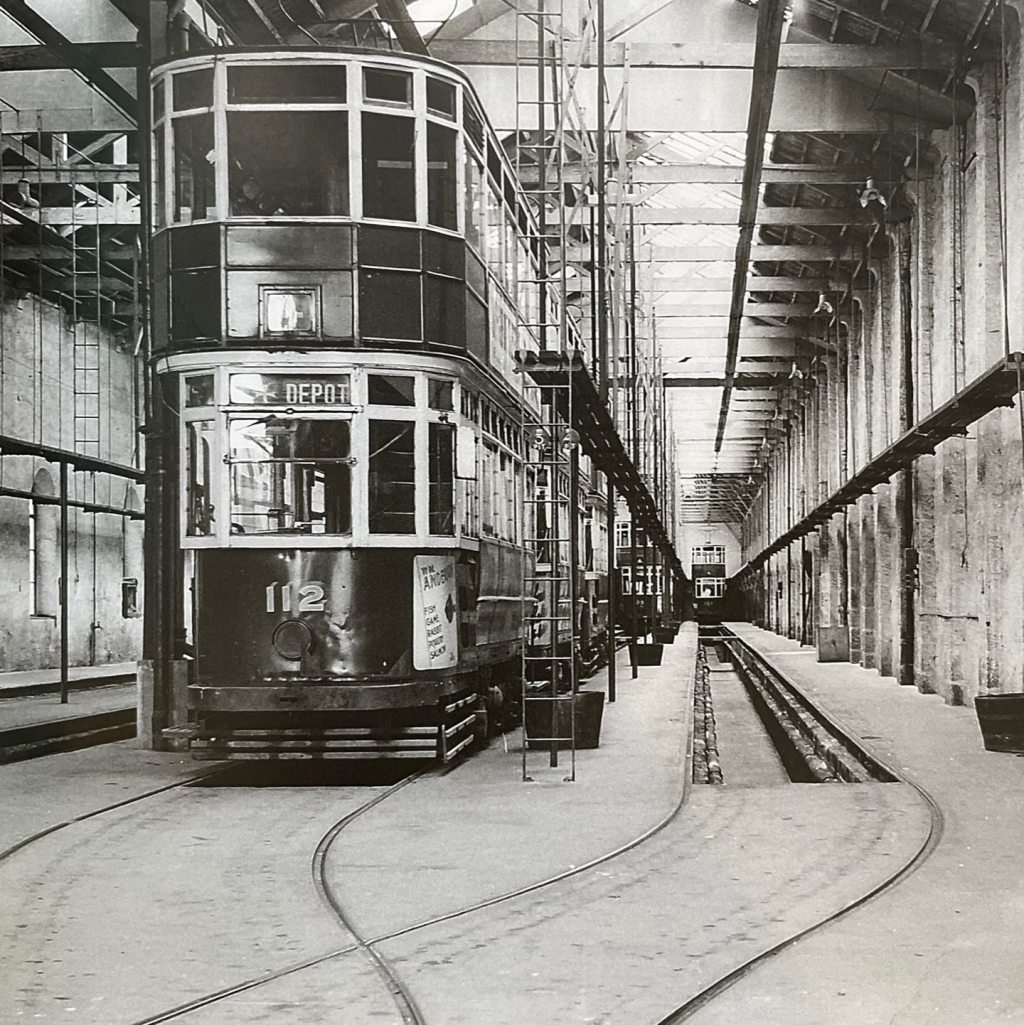


Queen’s Cross – The District’s Main Depot in Fountainhall Road Opened in 1874 & Closed in 1958. The inset photograph was taken on 8th April 1939.
Torry – The Depot Opened in 1904 at South Market Street & was the Paint Shop from 1910 to 1931 – Built c.1903. A Tall 1-Storey, 1-Bay x, 6-Bay Ashlar Building with a round-headed End Door surmounted by a Pediment. The Bays are separated by Pilasters.
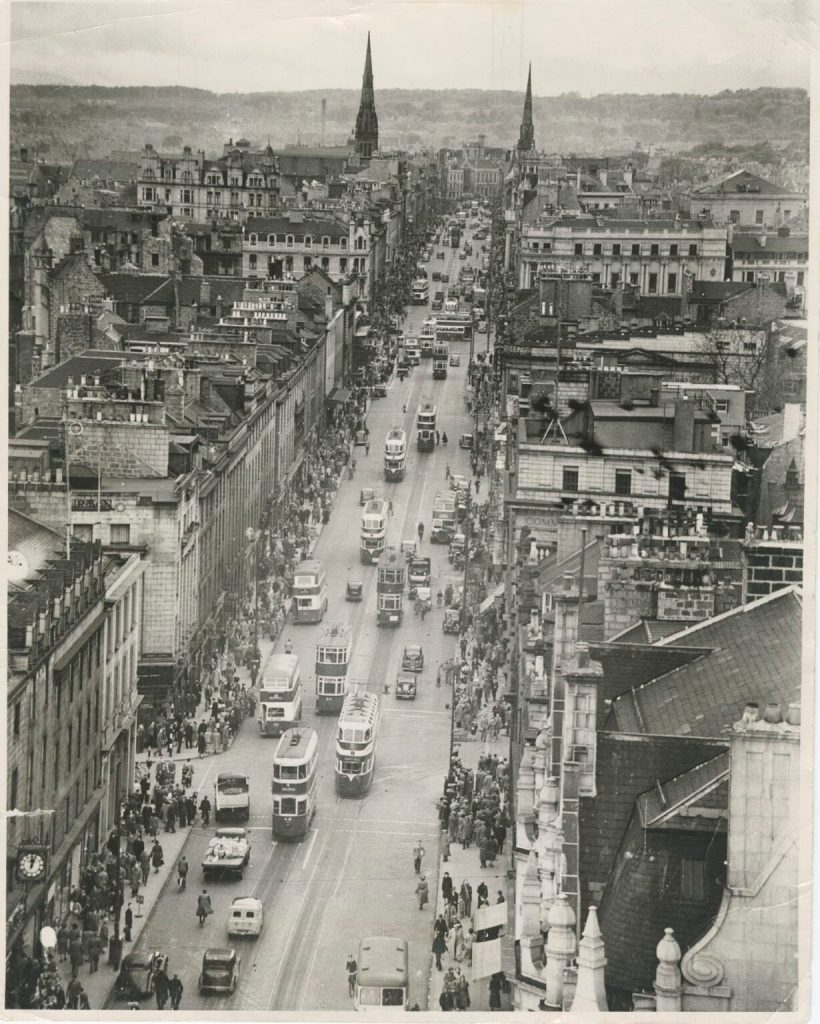
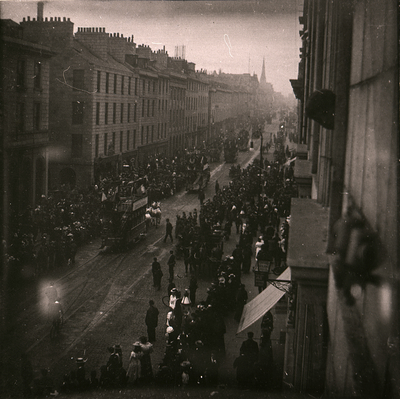
There is an evocative selection of DVD Film is available recapturing the Glory Days of Aberdeen Trams including Archive footage (the earliest dating from 1906) together with detailed coverage of the Services abandoned between 1954 – 1958.
In 1954 take a Trip around the Queens Cross Circle (3, 5, & 6)
In 1955 travel aboard a variety of different Aberdeen ‘Standards‘ along the length of the fascinating Woodside Route (7) with its single Track & Loops Terminal Section in busy St Nicholas Street.
In 1956, join the Holiday-makers riding down to Sea Beach (9) & out to Hazlehead (4), with its ½-mile of Private Reserved Track.
In 1957, participate in an enthusiasts Tour on 108 with visits to King Street Depot & the Pittodrie Loop.
In 1958, sample the Standards & Streamliners on the world famous ‘Bridges‘ Route (1 – Brig o’ Dee – Brig o’ Don) with in-depth looks at both Termini as well as the 4-Thoroughfares traversed – King Sreet, Castle Street Union Street & Holburn Street.
Rich in the Period atmosphere – with buses, cars, lorries, trains, buildings, street furniture & fashions.
Special features: A look at the Fleet using Stills & Film, A Wartime ‘Fire’, Ex-Nottingham & Manchester Cars in Service, A Balcony Tramcar purloined by Ragday Students, Superb Snow Scenes, Final Day activity including the Last Tram, an Inglorious Funeral Pyre.
3rd May 1958 Last Route Operated was the Bridge of Dee to Bridge of Don
The Corporation Tramway failed to Develop. Inflation & problems associated with WW1 crippled it: materials & men had been diverted to the War Effort. The Pirate Buses of the 1920s provided direct Competition that the Tramways could not match.
12th May 1958 All remaining Electric Cars were purposely Burned at the Queen’s Links clandestinely Overnight.
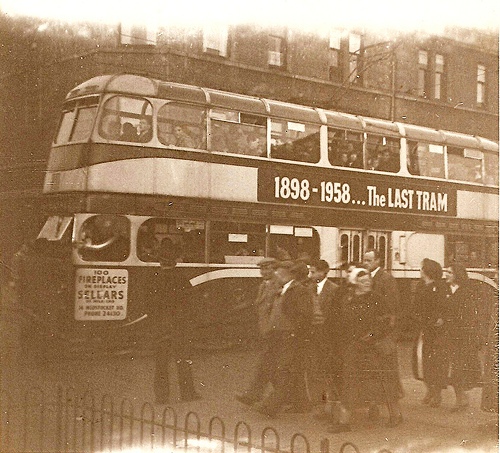

Fit a sorry sicht – Supreme Act of Fiscal Vandalism
Aberdeen is a rich & handsome Town, inhabited by an excellent people. – Jean de Beaugue, 1548.

– and so to Buses –
Mrs Margaret Hay from Bucksburn
In 1958 I was lucky enough to be employed with the Alexander Bus Company, (Northern) a well-known Family-owned Local Firm. The happy times I had on the Buses working my ‘way up the Sheets’ & through the various Rotas & Shifts set up for the many young girls Employed by the Bus Company. There were Male Conductors – mainly Students but only in the Summer. On my Journeys out to the Country, it was not uncommon to be Snowed in during the depths of Winter. In the Bus was a bag of Sand & a Shovel in the event of Traction problems. In the old type Buses the Conductresses had to open the Door (years before the advent of the Automatic Hydraulic Doors) & sometimes the Snow was knee-high. I had to get out & shovel the Snow away so that the Passengers could get off. The work was sometimes hard & thankless. For example, if the Float of 10/- plus the day’s takings (indicated by the value of Tickets handed out) did not Tally to the correct amount the Girls would have to Pay shortages out of their own Wages. I agreed with this Ruling as the best method of keeping the Girls vigilant but it was still quite tough. The Company was also very strict on the Uniform. When I joined the Company I had to pay 30/- for my Outfit. For my money I got a Navy Blue Jacket & Skirt piped in a contrasting Blue. I also had to wear a White Shirt with a Collar & a Black Tie, Black Stockings had to be kept free of runs and any violations of the Dress Code would result in Suspension. This may have sounded extreme but lead to a Team of very well-turned-out Ladies whose nickname ‘Clippie’ came to embody the high level of Service that people expected ‘on the Buses’. I was a very proud young girl in my pristine 30/- Bluebird Uniform. The Buses used to deliver Newspapers, Mail & Parcels out to Country Villages & Towns. My average day on the Bus as one sorting Goods for Delivery, taking money from Passengers ‘Clipping’ Tickets & writing was known as the ‘Waybill’. This was a Document which detailed the Route taken on a given Journey. It gave information such as each Town passed, how many Passengers had travelled & also how many ha’penny Tickets had been issued as the Ticket Punch did not Register that small amount. For this responsible job, I had to pass 3-Important Tests – a Medical, a ‘Sums’ Test & a Public Service Vehicle License. My Badge No. was LL18029. I was sent on many varied Routes, including the ‘Limited Stop’ to Edinburgh & Glasgow, a stint in the Elgin Section & Journeys all around Strathdon. I soon came to know all the regular Passengers & the Bus would wait for them if they were not at the Stop at their usual time. Special Buses for the Workers at Culter, Muggiemoss & Stoneywood Mills were laid on. The familiar Blue & White Buses with that Bluebird on travelled all over Scotland as they still do. My special Souvenirs are my PSU Conductor’s Licence & my Bluebird Badge. I have distant & happy memories of those times.
